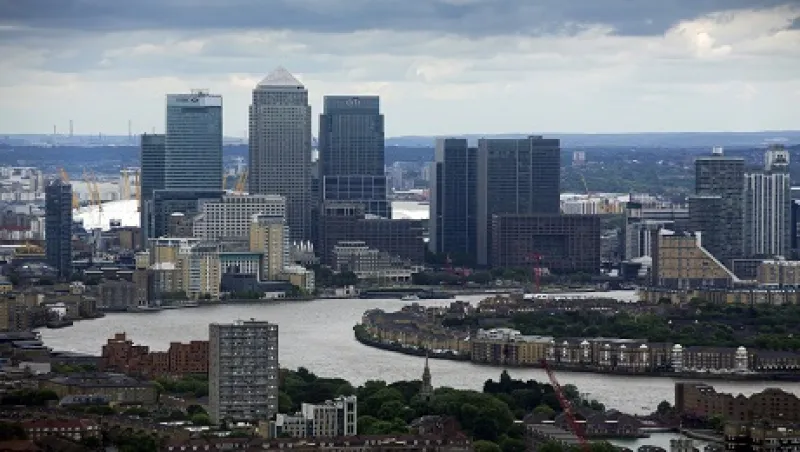Pension funds and other institutional investors are showing an increasing interest in riskier U.K. properties outside the safe havens at the heart of the capital — but that doesn’t mean they see a recovery in the U.K. economy.
“Until the start of this year, investor interest was very heavily concentrated in very prime assets, predominantly within central London,” says Chris Urwin, global research manager, real estate, at Aviva Investors in London. “But now there seems to be much greater investor interest in more secondary assets.” Urwin says there are several bidders now for many second-grade properties, where a year ago there might have been just one or two. Aviva Investors has £22.5 billion ($34.5 billion) of property assets under management globally, four fifths of which are in the U.K.
Excluding central London offices, new supply is expected to be extremely limited over the next few years, and selective strategies targeting better-quality secondary assets look likely to outperform investments in prime assets. Appealing properties in the second-grade bracket include, according to Urwin, office properties in London and the southeast outside the center of the capital, as well as warehouses — though he warns against investing in office markets heavily dependent on the public sector, which is reining in spending.
From his vantage point at the center of one of Britain’s biggest property investors, Urwin says the interest is coming from a combination of domestic pension money and foreign institutional investment.
He credits growing institutional interest largely to an unusually wide yield gap by historical standards. He says typical yields are about 4.75 percent for offices in London’s West End, compared with about 10 percent for several secondary markets, according to the commonly quoted IPD U.K. Quarterly Property Index, including offices in the southeast, which includes the wealthy counties of Surrey and Kent.
Joe Valente, European head of research and strategy for global real assets at J.P. Morgan Asset Management in London, also puts the yield gap between the primary and secondary markets at about 5 percentage points — compared with a 20-year average, he says, of 1.5 percentage points.
“Because of the extreme risk aversion since 2008, risk has been mispriced,” says Valente. This has drawn interest in particular, he says, from large private equity firms and funds run by asset managers, such as J.P. Morgan Asset Management, that invest on behalf of third parties.
Based on deals he has recently seen, Valente deems interest strongest in deals priced at £50 million to £100 million — the more liquid end of the secondary market, which offers quick exits for investors. These include office developments and relatively small shopping centers. Geographically, the interest is largely in London and its environs, including London’s South Bank, the inner suburb of Hammersmith, and towns close to London such as Bracknell. However, central London does not offer strong yields, except for some property investments that are more challenging for investors, such as vacant lots.
New York–based private equity firm KKR & Co. announced its first European property acquisition in June: the purchase of a 430,000-square-foot retail park portfolio from London investment firm Resolution Property, consisting of warehouse space and food, shopping and retail outlets in Oxford, Glasgow and Sunderland.
The Glasgow and Sunderland assets fit with KKR’s role as a value investor, says Guillaume Cassou, who runs KKR’s European real estate team out of London — though the Oxford assets are higher-tier. KKR has not disclosed the financial details of the deal, but Cassou says the yields are in the high single digits.
“A big brush has been applied through all secondary markets, pushing yields up,” Cassou adds. “But through good selection and our ability to understand what can produce a good yield and strong cash flow, we can increase the value of our assets.”
Norges Bank Investment Management, which manages Norway’s $725 billion Government Pension Fund Global sovereign wealth fund, also dipped its toes into a similar part of the secondary property market in June. It spent £250 million on warehouses used by retailers including U.K. supermarket chain Tesco.
Institutional investors downplay buying into the secondary property market as a play on an upturn in the U.K. economy.
“Our investment is not predicated on economic recovery,” says Cassou. KKR’s Glasgow property has two vacant units following the recent business failures of the retailers JJB Sports and Comet Group, an electrical products chain. U.K. retailing remains hard-pressed, though Cassou sees these vacancies as an opportunity to grow the properties’ yield.
Urwin of Aviva says investors are not banking on strong economic growth, but they are attracted by the fact that the U.K. economy has at least stopped declining. Economic improvement, in combination with the high yields of secondary retail properties, could attract more institutional investors — but yields may not remain this attractive for long.






